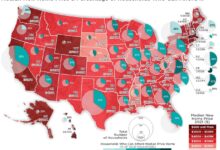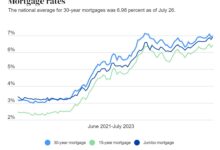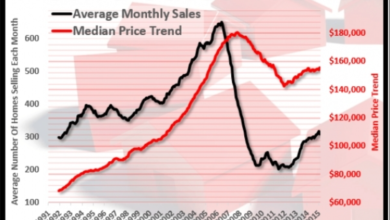In the dynamic world of real estate, the home sales market serves as a barometer of economic trends, consumer sentiment, and the overall health of the housing industry
Understanding the intricacies of this market is essential for both buyers and sellers, as they navigate a landscape shaped by factors ranging from interest rates to local demand. This article explores the key elements that define the home sales market, shedding light on its multifaceted nature and offering insights to those looking to engage in real estate transactions.
1. Market Trends: Unraveling the Forces Driving Home Sales
The home sales market is intricately linked to broader economic trends, making it a dynamic and responsive entity. Economic indicators, such as interest rates, employment rates, and inflation, exert a profound influence on the demand and supply of homes. When interest rates are low, for instance, borrowing becomes more affordable, prompting an increase in homebuying activity. Conversely, economic uncertainties or rising interest rates may lead to a more cautious market. Understanding these economic forces is crucial for both buyers and sellers, allowing them to make informed decisions based on the prevailing conditions.
-
Housing Market Forecast For 2024: What To ExpectJuly 29, 2024
-
Trends In Existing Home Sales: What To Know In 2024July 29, 2024
1.1. Interest Rates: The Pulse of Home Financing
Among the various economic factors, interest rates play a pivotal role in shaping the home sales market. Mortgage interest rates directly impact the cost of borrowing for homebuyers. When rates are low, buyers are incentivized to enter the market, spurring demand for homes. Conversely, rising interest rates can result in higher mortgage costs, potentially dampening buyer enthusiasm. Home sellers, on the other hand, need to be attuned to these fluctuations to strategically time their listings and capitalize on optimal market conditions. By monitoring interest rate trends, market participants can navigate the ever-changing landscape with foresight and agility.
1.2. Regional Dynamics: Local Factors Shaping Home Sales
While national economic trends provide a broad overview, the home sales market is profoundly influenced by local factors. Regional variations in job markets, population growth, and amenities contribute to the unique character of each housing market. Urban areas may experience higher demand due to employment opportunities, while suburban or rural regions might attract buyers seeking a quieter lifestyle. Real estate professionals and market participants must analyze these local dynamics to tailor their strategies. Whether it’s understanding the allure of a specific neighborhood or predicting emerging trends in a particular city, the ability to navigate regional nuances is pivotal in achieving success in the home sales market.
2. Market Dynamics: Strategies for Buyers and Sellers
Beyond understanding the economic and regional influences, navigating the home sales market requires a nuanced approach. Buyers and sellers alike need to adopt effective strategies to capitalize on opportunities and overcome challenges presented by market fluctuations.
2.1. Buyer’s Market vs. Seller’s Market: Adapting Strategies to Conditions
The home sales market often experiences cycles, swinging between buyer’s markets and seller’s markets. In a buyer’s market, supply exceeds demand, offering buyers more negotiating power. Sellers may need to be flexible with pricing and incentives to attract buyers. On the other hand, a seller’s market, characterized by high demand and limited inventory, empowers sellers who may receive multiple offers. Buyers need to act swiftly and present competitive offers. Recognizing the current market status is crucial for both parties to tailor their approach and optimize outcomes in different market conditions.
2.2. Technology and Marketing: Tools for Success in a Digital Era
In today’s digital age, technology plays a pivotal role in the home sales market. Buyers often start their search online, and sellers can leverage digital platforms for effective marketing. High-quality photos, virtual tours, and online listings enhance a property’s visibility. Real estate professionals, too, utilize technology for data analysis, market research, and targeted marketing campaigns. Embracing technology allows market participants to stay competitive, reach a broader audience, and streamline the buying and selling processes in an increasingly interconnected market.
2.3. Adaptability and Timing: Keys to Success in the Market Fluctuations
The home sales market is dynamic, with conditions evolving over time. Successful participants understand the importance of adaptability and timing. For sellers, knowing when to list a property and understanding market trends can impact the speed and success of the sale. Buyers benefit from staying informed about market conditions to make strategic offers. Flexibility in negotiations, coupled with an awareness of the broader market dynamics, positions both buyers and sellers for success in the ever-shifting landscape of the home sales market.









